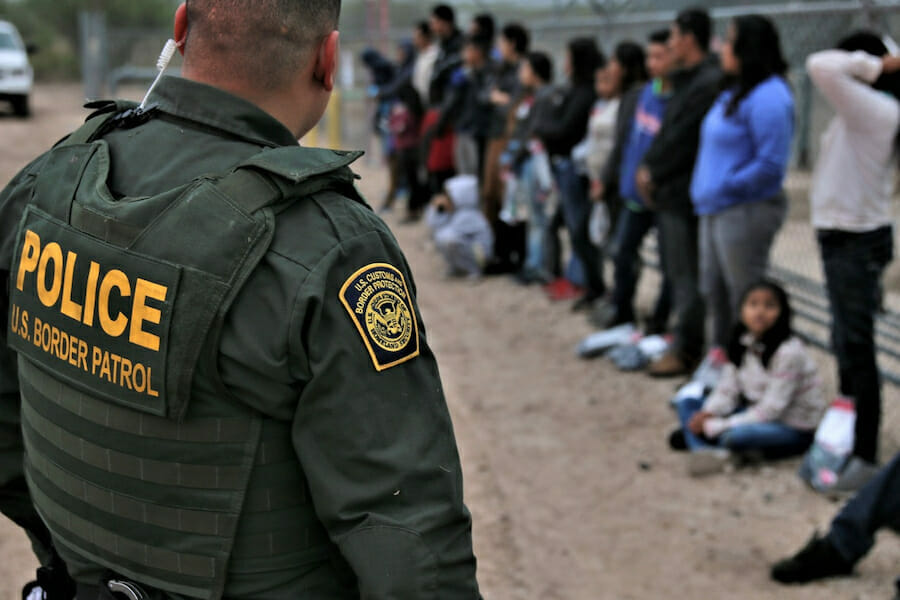
Safe Third Country Agreements are the Latest in a Series of Shortsighted Migration Solutions
Three of the world’s deadliest nations will soon be considered “safe third countries” if the Trump administration is successful in implementing its latest migration initiative. In late September, Honduras followed El Salvador and Guatemala in signing an agreement that would allow the U.S. to send migrants back to these countries to seek asylum if they passed through them on their journey to the U.S. border.
These agreements are the latest stopgap pushed by the administration to combat the ongoing migration crisis. They come after Trump cut off desperately-needed aid to these countries, known as the Northern Triangle, earlier this year. Yet slashing aid while sending vulnerable migrants into unsafe conditions will only exacerbate migration pressures and strain the region’s already limited resources. The U.S. should instead focus on restoring funding and programs that address the causes of migration to ensure a mutually beneficial, long-term solution to the crisis.
Gang violence and poor governance combine to make the Northern Triangle one of the world’s most dangerous regions. Those fleeing the violence face perilous journeys north to the U.S., where migrants from the region now make up nearly 75% of border apprehensions. In 2015, at the height of the region’s violence, Congress approved $754 million in aid to the Northern Triangle to support the region’s goals of improving governance, increasing economic opportunity and reducing crime. Since then, the region has made strides toward these goals, but there is still much work to do. Restoring aid to the previously allocated amount will allow this progress to continue.
Unfortunately, the administration has consistently framed migration first and foremost as a burden on the U.S. immigration system, rather than as a larger regional crisis. This has resulted in several shortsighted policy solutions – the withdrawal of aid, the push for a border wall, the Migration Protection Protocols (also known as Remain in Mexico), and safe third country agreements, to name a few – that seek to benefit the U.S. with little regard for the consequences imposed on our regional allies and on asylum seekers. But foreign policy is not a zero-sum game. Instead, foreign policy solutions can and should be mutually beneficial.
Many of the U.S.-funded programs showed significant promise to that end. Between 2015 and 2017, the homicide rates in the region dropped significantly. El Salvador saw a 42% decrease, including 61% in the municipalities where the U.S. Agency for International Development (USAID) operated. Similarly, a program targeted at Honduras’ most dangerous neighborhood yielded a 90% reduction in homicides. A recent study from the Center for Global Development shows a causal relationship between violence and child migration from the Northern Triangle. The study found that every ten homicides prevented in the region resulted in six fewer unaccompanied child apprehensions at the U.S. border, making these violence prevention programs especially valuable to both the U.S. and the Northern Triangle.
The report also shows that the migration caused by past violence continues to impact future migration for some time. Migration flows create networks and infrastructure that facilitate further migration. Therefore, the viability and potential benefits of migration continue to outweigh the decreasing – but still considerable – risks of remaining in country for some time. In other words, there are no overnight solutions to the migration crisis. Sustained violence reduction is necessary for long-term success. The U.S. should fill this need by ensuring consistent programming that is unaffected by local election cycles or sudden policy changes.
Our partnerships with the Northern Triangle have helped to increase local incomes and reduce violence, impunity, and unemployment in targeted communities. Their success has allowed the U.S. to develop and promote effective, comprehensive strategies moving forward to begin to strengthen the region’s institutions and restore faith in them. These partnerships also provide something that safe third country agreements and the $32.6 billion border wall and security budget cannot – a way out. By treating the causes of migration instead of the symptoms, aid may be progressively diminished – not punitively, but because these nations have become more stable and self-reliant.
Last week, the Trump administration showed its appreciation for the safe third country agreements by promising to restore $143 million in aid to the Northern Triangle. That amounts to less than one-third of the original aid promised for FY 2019 and less than one-fifth of the amount approved in FY 2016, the year the region saw its largest reductions in homicide rates. While this funding is a step in the right direction, it falls far short of what is needed to achieve the administration’s stated goals of curbing immigration. Meanwhile, if the safe third country agreements do somehow overcome the legal hurdles they are expected to face, the result is much more likely to resemble a pressure cooker than a relief valve – setting the stage for a future crisis.
The U.S. should not be shortsighted in addressing the Northern Triangle’s deep-seated challenges. Instead, it should focus on lasting solutions that benefit both itself and its neighbors. The region’s improvement in recent years shows promise for the future. The work is far from complete, but that is exactly why it must continue. As a regional and world leader, the U.S. should continue to lend its hand to the Northern Triangle. The stability of our neighbors strengthens our security. Their prosperity promotes our own. We should look beyond the zero-sum game and see foreign aid to the region for what it is: a deal that is win-win.

